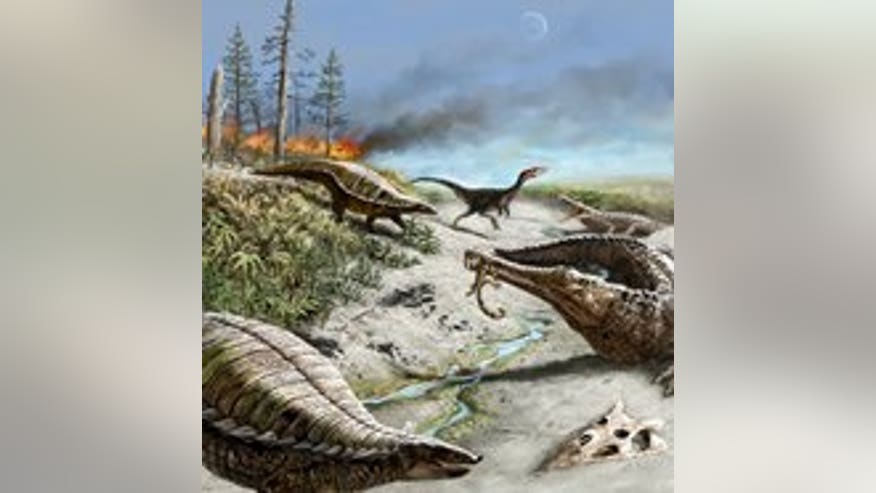New research has revealed why it took more than 30 million years for large Triassic dinosaurs to populate the tropics after they first appeared on Earth, ending a mystery that has kept researchers baffled for decades. Using new geological evidence culled from Ghost Ranch, N.M., researchers from the University of Southampton in the U.K. have found that an extremely unpredictable hot and arid climate due to elevated carbon dioxide levels (four to six times of what they are today) kept large herbivorous dinos at bay until after 200 million years ago.
“For several decades, researchers have noticed a curious case: large plant eating dinosaurs seemed to be much more common at high latitudes during the Triassic,” Jessica Whiteside of the University’s National Oceanography Centre in Southampton told FoxNews.com. “However, it has only been in the past decade that we’ve realized they’re completely missing from the tropics, where only a few small carnivorous dinosaurs dwelled.”
According to Whiteside, researchers had suspected that climate had played a role, though no one had developed a detailed environmental record from the same sediments that also preserved extensive fossil vertebrate records (including small dinosaurs) – until now. “Our major finding is that wild swings in climate and extremes of drought and intense heat have implications for survivability of Triassic vertebrates, including early dinosaurs.”
These “wild swings in climate” included raging wildfires that would sweep the dry landscape and continually reshape the vegetation that large plant-eating dinosaurs like Brachiosaurus, Diplodocus, and Brontosaurus would have fed on. These fires occurred every few dozen years and would reach temperatures up to 1112 degrees Fahrenheit. While these conditions suited smaller carnivorous dinosaurs such as Coelophysis just fine, the larger plant eaters decided to temporarily forgo equatorial areas for the higher latitudes.
“The large, plant-eating forms (the long-necked sauropodomorphs, predecessors of the giant Jurassic sauropods) are found from Late Triassic age sites in Europe, South America (Brazil and Argentina), South Africa, and the polar regions,” Whiteside said. “Essentially everywhere from the same time period except the tropics.”
The team culled their evidence from an area that’s no stranger to hot and arid climates– Ghost Ranch, N.M. The scenic 21,000–acre retreat – famous as the place where artist Georgia O’Keefe painted for most of her career – was located close to the equator 205-215 million years ago at 12 degrees North (it lies at 36 degrees North today).

0 komentar:
Posting Komentar